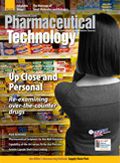Manufacturing Strategies for Biosimilars
Innovator and generic-drug companies need to adapt to compete in the biosimilars market.
Generic-drug manufacturers historically have replaced high-cost small-molecule drugs with low-cost equivalents by establishing relatively low-technology facilities and taking advantage of lower raw-material and labor costs. Today, a new set of patents is expiring, except this time it is innovator biopharmaceutical companies that stand to lose profits. Will history repeat itself?
Not if innovator biopharmaceutical manufacturers have something to say. Having invented the biopharmaceutical processes for some of the most expensive drugs, they must learn to adopt lean development and manufacturing practices to lower their cost of goods sold and achieve favorable gross margins.
Innovator companies are going head- to-head with generic-drug companies, of which some generate enough revenue to rank among the top 20 global drug companies. These generic-drug powerhouses have the working capital to invest in biosimilars. Such investment requires adapting a low-cost business model to account for completely different manufacturing processes, equipment, and employee skill sets.
The number of bioequivalence studies needed to ensure public safety and the resulting cost structure is one factor influencing the ability of the industry to provide low-cost biosimilars. These factors aside, looking at the development and manufacturing sides only, for biopharmaceutical innovators to be successful producing low-cost biosimilars, their focus must shift from innovation to replication. That change means developing strategies to transform expensive development and manufacturing processes into lean analogs.
To meet growing demand for biosimilars, innovators have to reduce the cost per unit dose and make the same amount of drug with fewer batches through higher fermentation titers, higher purification recoveries, and longer shelf-life formulations. Technologies, such as process analytical technology (PAT) enhance process predictability and understanding, thus minimizing batch rejections and increasing manufacturing run rates to produce batches more efficiently. Other technologies, such as disposable single-use systems (e.g., bioreactors, media and buffer tanks, and drug-substance container/closure systems) are effective, scalable, and inexpensive. Such technologies lower production costs by reducing the number of product-to-product and batch-to-batch changeovers and capital investments.
Novel drug-delivery technologies should be another area of focus for innovator biopharmaceutical companies. By enhancing the customer experience, these technologies could help boost market share and provide a source of sustainable competitive differentiation.
Generic-drug companies have to overcome a different set of challenges. Although these companies are adept at rapid development and low-cost manufacturing, biologics are more complex. Generic-drug companies will need the expertise to reverse-engineer the biologic and to develop a stable, therapeutically active cell line. They also will need to develop the manufacturing processes to meet specifications predictably and consistently while applying specialized analytical tools.
Additionally, investment in new infrastructure will be crucial for controlling living cells and for purifying biologics to produce biosimilars at commercial scale consistently. Companies must invest capital in bioreactors, purification suites, fill–finish operations, sterile environmental controls, and systems that are more liquids-based than solids-based.
To ensure stability during production, storage, and shipping, generic-drug companies must be able to characterize and mitigate the risk of degradation mechanisms of complex biologics. They also must, however, avoid long development times to maintain the revenue and market-share advantages that first-to-file status provides. Equivalency standards also may need to be scrutinized more closely because even small differences from the innovator drug (e.g. binding, activity, posttranslational modification, impurity profiles, and stability) can affect bioequivalence and put regulatory approval at risk.
Demand for lower-cost drugs, including biosimilars by governments, payors, and consumers is evident. The question is whether innovator or generic-drug manufacturers will be able to address the biosimilar business-model challenges to achieve a favorable outcome.
Albert Lee(alee@prtm.com) is an associate, Dinkar Saran (dsaran@prtm.com) is a principal, and Mark Mynhier(mmynhier@prtm.com) is a partner, all in the healthcare practice of the management consulting firm PRTM.

Drug Solutions Podcast: A Closer Look at mRNA in Oncology and Vaccines
April 30th 2024In this episode fo the Drug Solutions Podcast, etherna’s vice-president of Technology and Innovation, Stefaan De Koker, discusses the merits and challenges of using mRNA as the foundation for therapeutics in oncology as well as for vaccines.
Pharmaceutical Tariffs Are Imminent: How Industry is Bracing for Impact
April 16th 2025On April 14, 2025, the Trump Administration launched a national security-driven investigation into pharmaceuticals, a move that will likely result in tariffs being placed on pharmaceutical drugs, ingredients, and other components that are imported from outside of the United States.